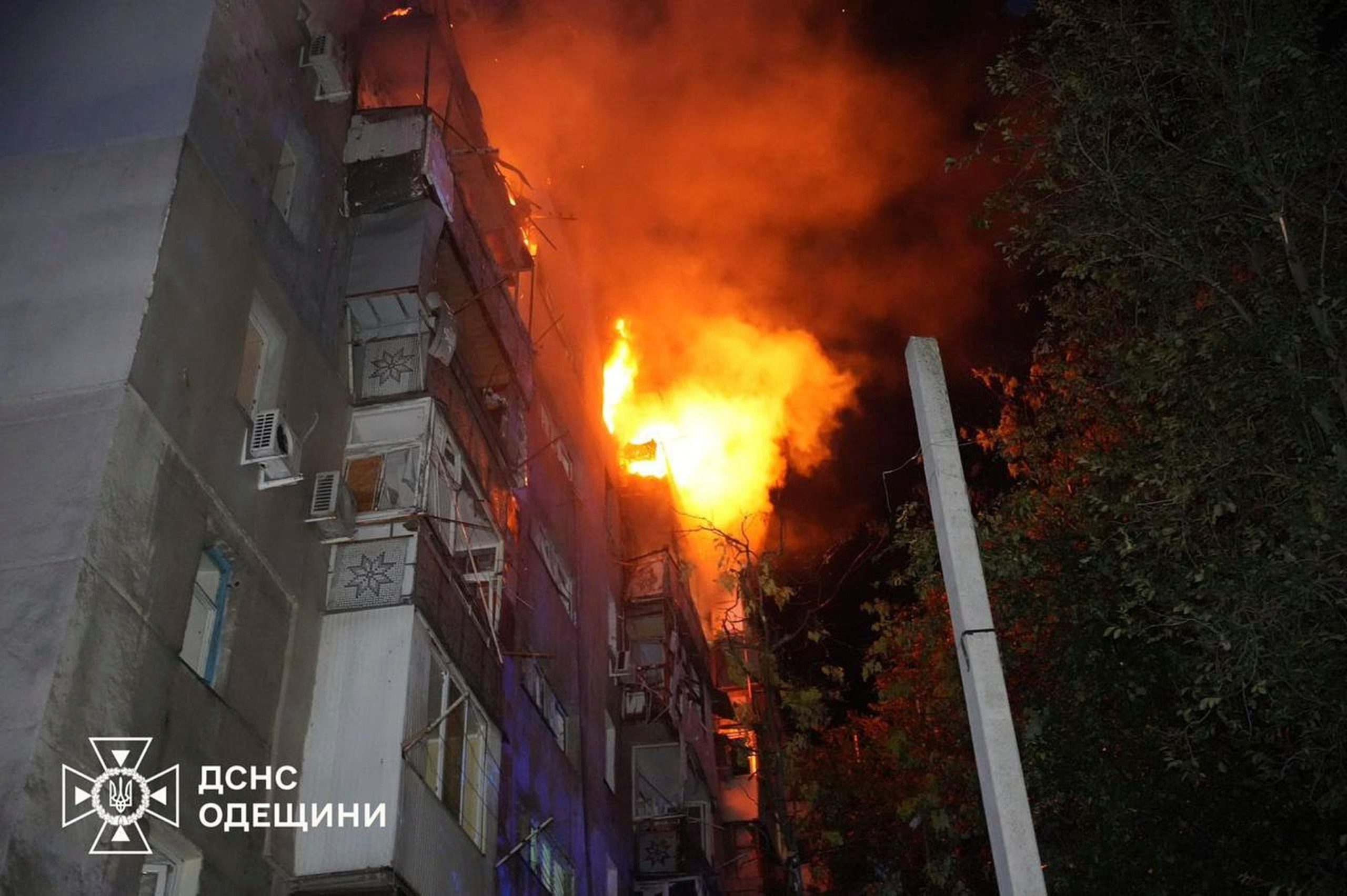Escalation of Attacks on Ukraine
Ukrainian President Volodymyr Zelenskyy reported that Russia launched a significant attack on Ukraine during the night, utilizing over 300 drones and more than 30 missiles. The strikes took place from Friday night into Saturday morning, affecting multiple regions across the country. These areas include Donetsk, Kirovohrad, Dnipro, Sumy, Kherson, Volyn, Zaporizhzhia, Mykolaiv, Odesa, and Zhytomyr.
The attacks have resulted in casualties and damage to infrastructure. At least one person was killed, and six others, including a child, were injured in the southern port city of Odesa and its surrounding areas. An apartment building was damaged in the incident, highlighting the severity of the assault.
In addition to the injuries in Odesa, critical infrastructure suffered damage in Sumy, leaving several thousand families without power. This disruption has had a significant impact on daily life for residents in the area. Another residential building and critical infrastructure were also damaged in Pavlohrad, an eastern city located in the Dnipropetrovsk region.
Zelenskyy emphasized that the attacks are still ongoing, noting that drones remain active in the air. He warned that the situation is far from resolved and that further action may be necessary. “Target elimination is still ongoing — drones remain in the air,” he stated, underscoring the persistent threat posed by the attacks.
Rescue operations are currently underway in the affected areas as emergency services work to address the damage and assist those impacted. The Ukrainian government is coordinating efforts to provide support to the affected communities, including restoring essential services and ensuring the safety of residents.
The attacks have raised concerns about the stability of the region and the potential for further escalation. With critical infrastructure being targeted, there is a growing need for international support and assistance to help Ukraine recover and rebuild. The situation remains tense, with both sides continuing to monitor developments closely.
Impact on Daily Life and Infrastructure
The damage to critical infrastructure has had a direct impact on the lives of many Ukrainians. In Sumy, the loss of power has disrupted essential services, including healthcare facilities and communication networks. Residents in the area are now facing challenges in accessing basic necessities, such as electricity and clean water.
In Pavlohrad, the destruction of a residential building has left families displaced, adding to the growing number of people affected by the conflict. The damage to critical infrastructure in this region highlights the broader implications of the attacks, as they threaten not only individual homes but also the overall stability of the community.
The targeting of cities like Odesa and Dnipro demonstrates the strategic nature of the attacks. These areas are important economic and cultural centers, and their disruption can have long-term consequences for the region. As the conflict continues, the focus remains on minimizing harm to civilians and protecting key infrastructure.
Ongoing Concerns and Future Outlook
As the attacks continue, there is a growing concern about the potential for further violence and instability. The use of drones and missiles indicates a shift in tactics, with attackers seeking to maximize damage while minimizing their own exposure. This approach poses new challenges for defense and security forces, who must adapt to the evolving threat landscape.
International observers are closely monitoring the situation, with calls for increased support and intervention to prevent further escalation. The global community is urged to take decisive action to ensure the safety and well-being of the Ukrainian population.
In the coming days, it will be crucial to assess the full extent of the damage and to implement measures to restore normalcy. The resilience of the Ukrainian people, combined with continued international support, will play a vital role in overcoming the challenges posed by these attacks.







